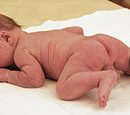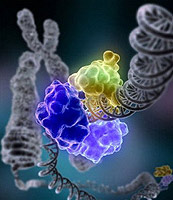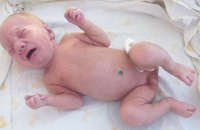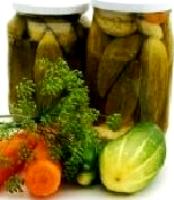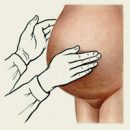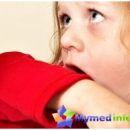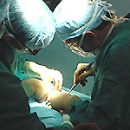What caused the hyventidinemia disease? What are the symptoms of this disease? How to treat him? Read in this article.
Content
Gistidinemia
This disease is relatively rare (1: 17000), since the active identification of children with such pathology is only beginning.
Cause
Insufficient activity of a special enzyme (histidase) responsible for the transformation of histidine, which, in turn, accumulates in the body, causing irreversible brain damage. With the absence of enzyme, the disease is manifested in the first months of life and quickly progresses, often leading to death.
Manifestations
The overall condition of the child is worse, lethargy appear, the focus, refusal of food. Then join the symptoms of brain poisoning, which is manifested by a change in muscle tone and a slowdown in the overall development of the child. With a small activity of the enzyme, the disease develops gradually and manifests itself in the form of a lag in mental and speech development; In addition, these children often have a hearing impairment. Many children have emotional behavioral disorders in the form of increased excitability, aggressiveness, fears.
The appearance of children somewhat resembles patients with phenylketonuria: children are also blond and blue-eyed.
Treatment

Low contents of histidine: Kidney Beef, Cod, Corn Flour, Bow, Potatoes, Carrot, Beets, Fruits, Vegetable Oil, Butter, Milk Breast, Green Canned Peas, Tomatoes.
High histidine products: beef, veal, chickens, chickens, egg whole, squirrel, yolk, cow's milk, cottage cheese, cheese, peas, barley, rye, wheat flour, rice.
The complexity of the preparation of dietary food is that histidine needs a child for normal development and throughout the first year of life the only source of this amino acid is containing food. The minimum daily need of a breast child in Gistidine is 16—34 mg / kg, this amount is contained in 100 ml of female milk.
For older children, a special protein mixture is composed, consisting of 13 amino acids without histidine, enriched with fat, glucose, vitamins and mineral supplements that meets its age needs. All diet therapy is carried out under careful control of blood tests and urine to determine the level of histidine in which this child can normally develop without a poisoning effect on the body.
Scientists have established that in the first year of the life of children, patients with histidinemia, should be preferred to female milk, and as a supplies — juice and vegetable puree. Dust, which is introduced under the supervision of a pediatrician, start with vegetable puree and only then porridge from oat and rice croups, mousses and kisins are gradually added.
Applying dietary treatment with the simultaneous control of the level of histidine in the blood, it is possible to make the necessary correction in the power supply, so that histidine is at a normal level (0.01—0.03 g / l).
The content of histidine in products (in grams per 100 g of product):
one. Women's milk — 0,028.
2. Milk cow — 0.081.
3. Kefir — 0.075.
4. Cottage cheese — 0.306.
five. Chicken egg — 0.294.
6. Meat beef — 0.805.
7. Chicken meat — 0,697.
eight. Beef liver — 0.439.
nine. Cod — 0.54.
10. Rice croups — 0.135.
eleven. Semolina — 0.186.
12. Buckwheat — 0.203.
13. Oatmeal cereals — 0.137.
fourteen. Croup-ray — 0.137.
fifteen. Pearl cereals — 0.152.
sixteen. Peas — 0.395.
17. Wheat flour — 0,096.
18. Pasta — 0,133.
nineteen. Rye bread — 0.118.
twenty. Wheat bread — 0.106.
21. Biscuit — 0.247.
22. Potato — 0,027.
23. Carrot — 0.024.
24. White cabbage — 0,028.
25. Tomatoes — 0.016.
26. Oranges — 0.007.
27. Lemons — 0.018.28. Apple juice — 0.010.
29. Orange juice — 0.009.
thirty. Lemon juice — 0.016.

